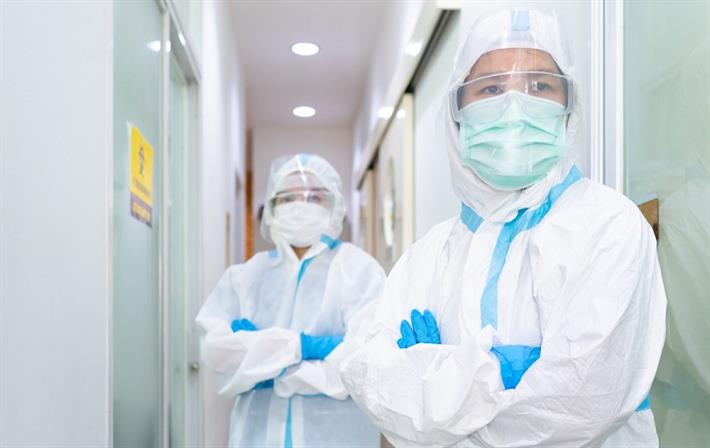
As the COVID-19 pandemic ravaged even the most developed countries of the world, India has shown its superior leadership, solidarity and its mind for innovation and quick thinking by achieving an unrealistic goal of producing 4.5 lakh of PPE kits within three months of the virus outbreak. This exemplifies India's "abilities, resources and commitment to its people", says a report released by Invest India.
Given the potential for border closures or unanticipated delays in procuring raw materials from other states, governments both at the Central as well as the state levels, must be proactive in planning to localise, regionalise and secure shorter supply lines, write Mishika Nayyar & Remya Lakshmanan in their report titled 'Personal Protective Equipment in India: A ₹7000 cr industry in the making'.
Government initiatives such as reducing the cost for licensing facilities and products, expediting development of high-speed manufacturing lines and other strategies to assist companies in overcoming barriers to new production, will encourage local companies to be able to shift production to making PPE equipment, Nayyar and Lakshmanan write.
India is one among the top countries in Asia with maximum number of Free Trade Agreements (FTAs), either in operation or under negotiation or proposed. Post COVID-19 crisis, the Indian government must re-evaluate current bilateral and multilateral trade agreements and envision new ones that enable supplies of critical components and materials. It is important that India implements the necessary measures to remove obstacles such as high cost compliance and strict regulation that hinder the overall competitiveness of exports in the country, the authors write.
On the question of tying up with technology companies, the report says"As one of the largest technology providers, India can leverage the technical know-how and build analytics to create efficient PPE supply chain management mechanisms to monitor high demand of critical products. This will enable to predict surges in ordering, maintain optimum stock levels, limit wastage and avoid stock-outs." PPE forecasts, based on rational quantification models, can ensure the rationalisation of requested supplies; assist in monitoring and controlling PPE requests from countries as well as large responders and promote a centralised request management approach.
Further, improvising indigenous PPE products to global standards will prove to be a benefit in the long-term to make PPE manufactured in India more export-oriented in conjunction with the rising global demand. "Disposing and processing of PPE suits is damaging to the environment and with sustainability becoming increasingly important to companies, reusable PPE gears will be preferred and will see a spike in demand in the future."
Pointing out that MSMEs are particularly vulnerable to the economic and trade impact of COVID-19, the report says, "Many and most of the PPE supply manufacturers in India are also MSMEs, who may be experiencing supply chain disruptions, and due to reduced sales and trade, facing liquidity and working capital constraints. Trade finance programmes for MSMEs by multilateral organisations such as World Bank and the Asian Development Bank can help facilitate domestic and global trade by financing MSMEs in developing economies like India."
Lastly, on leveraging India’s vibrant research and development ecosystem, it is imperative that India seeks collaboration with countries who are lead innovators in this segment alongside bolstering up the research institutions. Knowledge transfer at an international level can be achieved through research partnerships, building strategic alliances with countries with whom India already has a track record of collaborative research and exploring such research in the form of virtual institutes.
Fibre2Fashion News Desk (RKS)

